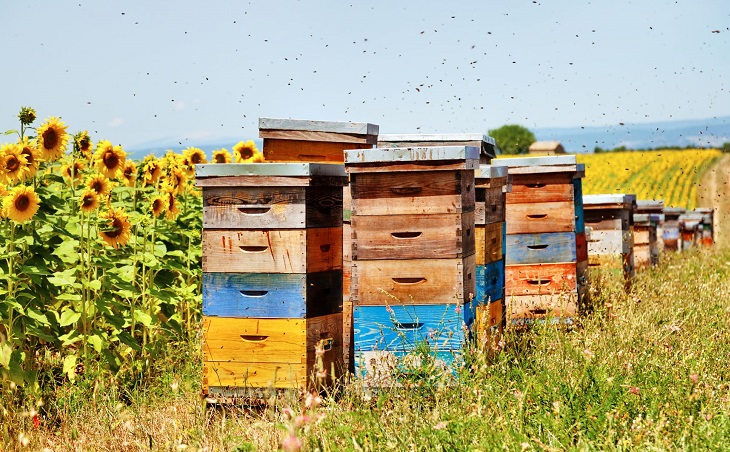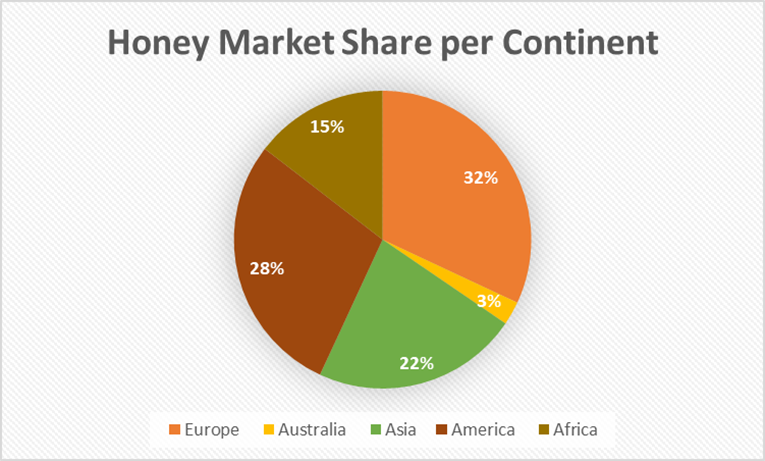Interesting Facts About Honey – Honey nutritional value

This post is also available in:
This post is also available in:
![]() Español (Spanish)
Español (Spanish) ![]() Français (French)
Français (French) ![]() Deutsch (German)
Deutsch (German) ![]() Ελληνικά (Greek)
Ελληνικά (Greek) ![]() Português (Portuguese (Brazil))
Português (Portuguese (Brazil))
Interesting facts about honey
Honey is a sweet, viscous liquid produced by honeybees. It is a natural sweetener used for thousands of years as a food, medicine, and sweetener. Honey has a unique flavour and texture that varies depending on the type of flowers from which the bees collect nectar.
Honey has a long and fascinating history that spans thousands of years. Here are some milestones in the history of honey:
- The first bees appear in the fossil record in deposits dating about 40 million years ago in the Eocene.
- Honeybees are believed to have originated in Africa around 30 million years ago. They were spread from Africa to Northern Europe and West into India and China.
- During 15th and 16th centuries, European explorers brought honeybees to the Americas, becoming an important source of honey and beeswax.
- Ancient Egyptians used honey in various ways, including as a sweetener, a preservative, and a medicine. They also used honey for embalming the dead.
- Honey was an important food source in ancient Greece and Rome and was often used as a reward for athletes and soldiers.
- In the 19th century, beekeeping became more widespread and honey production became more industrialized. Honey was also used to produce new products such as soap, candles, and cosmetics.
- Wild honey is also known to be widely collected by foragers until today
Based on FAO, the global market share of honey per continent is:

Nutritional Value of Honey
The components of honey are:
- Glucose and fructose & other sugars (60-85%)
- Organic Acids
- Vitamins
- Enzymes and amino acids
- Minerals (0.02-1%)
- Proteins (0.1-0.5%)
- Antioxidants (polyphenols, carotenoids)
- Water (12-23%)
Usually, honey moisture ranges between 13 and 25%, being optimal about 17%. Honey with very low moisture contents is difficult to handle and process. In honey, water activity (indicator who determines the lowe limit od “available” water for microbial growth) ranges from 0.49 to 0.65, even though for some honeys it can reach a value of 0.75.
Health Benefits of Honey
Raw honey is considered to be the most nutritious form of honey because it has not been processed or heated, which can destroy some of its beneficial properties.
Honey has many health benefits, including antibacterial, anti-inflammatory, and antioxidant properties. It can be used to soothe sore throats, heal wounds, and improve digestion. It is also a natural cough suppressant and can help alleviate allergy symptoms. The main compounds responsible for the antioxidant activity of honey are flavonoids, phenolic acids (caffeic, ellagic, coumaric, ferulic and chlorogenic acids), ascorbic acid, catalase, peroxidase, carotenoids and Maillard reaction products.
References
Adriane Alexandre Machado De-Melo, Ligia Bicudo de Almeida-Muradian, María Teresa Sancho & Ana Pascual-Maté (2018) Composition and properties of Apis mellifera honey: A review, Journal of Apicultural Research, 57:1, 5-37, DOI: 10.1080/00218839.2017.1338444
https://agora.mfa.gr/infofiles/italian%20honey.pdf
Interesting Facts About Honey – Honey nutritional value
Which Factors Affect Honey Quality
Honey Types and their Characteristics
Honey Produced in Forests and Meadows
Honey Legislation: Parameters, Criteria & Limits








































































